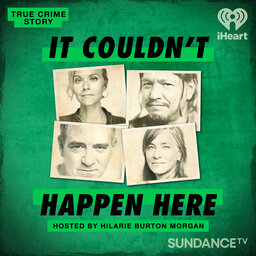Episode 3: The Crime Scene
Law enforcement descends upon the house of Dennis and Norma Woodruff - and makes a bizarre choice to document the grisly scene. Hilarie, Dan, Po, and Andrew will discuss the bizarre choice made by law enforcement as well as the evidence discovered at the scene of the crime.
For more information about this and other cases we've covered, follow @ICHHstories on Instagram.
 True Crime Story: It Couldn't Happen Here
True Crime Story: It Couldn't Happen Here


